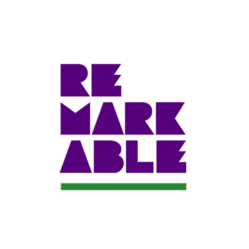We sat down virtually with a group of the amazing Product Mentors who helped to facilitate our week 4 Product Sprint for our #SYD20 program, and asked them to give us their top tips for a successful product sprint and here is what they had to say…
Sarah Kirkby, Product & Team coach at Product Space
“The goal of a product sprint is to quickly prove or disprove an idea and before jumping into a testing session, my top tip would be just to stop and think about what is it that you’re trying to learn here? This will really help you focus your questions on what you want to ask the user.”
Cheryl Gledhill, Head of Product at Zip Co Limited
“My top tip for running a Product Sprint is to have a clear sprint goal of exactly what you want to achieve. So figure out what is the one thing that we want to prove and be able to have something that within a couple of days you can actually prove. This may mean you need to pull together paper prototypes, or you do something in code, as well as, having clear success metrics of what you want to get out of it.”
Benjamin Wirtz, Co-Founder of Aurelius Health
“Sprints are all about focus and where a lot of people go wrong when thinking about products is that they think products are about building things, when it’s zero about building and all about changing something. Whether it’s customer behaviour or business metrics. So I think it’s important to go into a sprint knowing where you want to be when you come out of it, what do you want to have changed or what change do you want to prove for the business or the customer. Then everything becomes a lot more focused and you just need to do all of the things that are necessary to create that change.”
Ben Reid, Founder & Chief Officer at Digital Creators
“A big part of a successful digital product sprint is replicating the visualisation part of an in-person product sprint. While we’re doing a lot of things through video calls, we all know the power in testing of a visualisation against just words and so whether it comes down to even just thinking about what problem it is we’re trying to solve or early sketching ideas, or if we’re also looking at getting peoples feedback on it rapidly, any and every way to make the sprint feel like more of a whiteboard exercise is hugely beneficial. This visualisations allows creativity and also when we are able to see things visually we’re able to connect dots that we wouldn’t have otherwise. One of the benefits of doing this digitally is that you do end up with a whole bunch of artefacts already created for you rather than post-it notes and whiteboards that you then have to go back and turn into artefacts afterwards.”
Alan Jones, Entrepreneur in Residence at Remarkable
“One really important principle for a product sprint is that what we learn from users or potential customers is much more valuable to us in planning what we should do with our product, if the user or test subject genuinely believes there’s an opportunity to pay you something. Now we don’t have to wire up Paypal to actually collect a payment from somebody but if we give them a button to click that makes them feel like the next step in the process is the transaction part of it, then you’ll see much more realistic behaviour from people. The fact that they’re being offered a chance to pay for something encourages them to narrow down the number of features they’re prepared to use, and encourages them to be really specific about what they do and don’t want and makes them feel like they’re in less of a hypothetical exercise and more like this is really a product that they might start using today. Prompting them to ask the question ‘do I or don’t I want to use that?’.”




